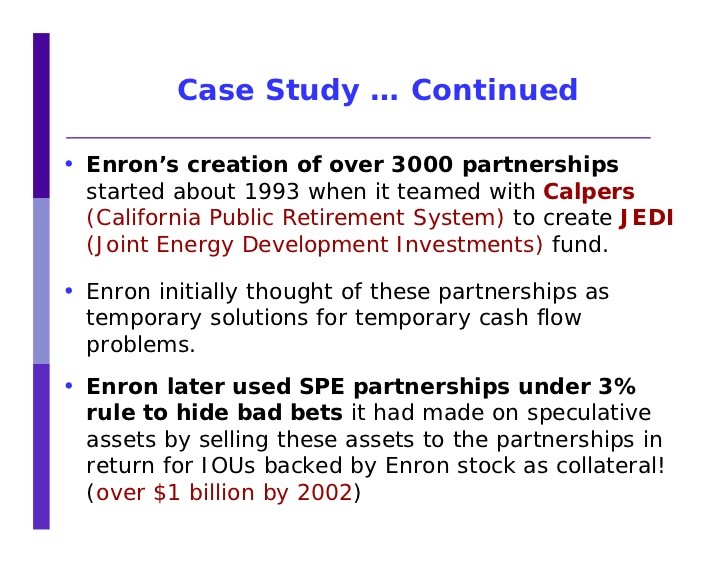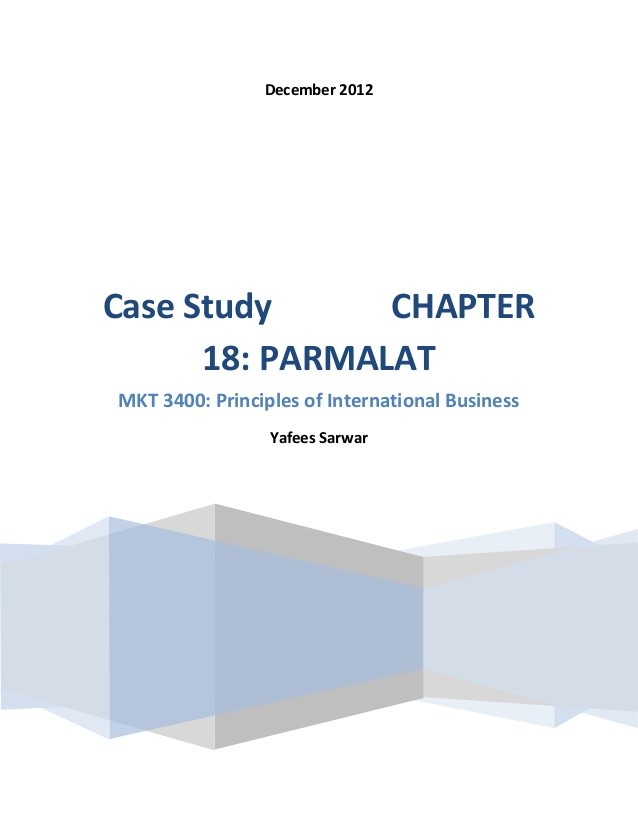Case Study Enron
Post on: 2 Июль, 2015 No Comment

Case Study: Enron
Background
Once the seventh largest company in America, Enron was formed in 1985 when InterNorth acquired Houston Natural Gas. The company branched into many non-energy-related fields over the next several years, including such areas as Internet bandwidth, risk management, and weather derivatives (a type of weather insurance for seasonal businesses). Although their core business remained in the transmission and distribution of power. their phenomenal growth was occurring through their other interests. Fortune Magazine selected Enron as America’s most innovative company for six straight years from 1996 to 2001. Then came the investigations into their complex network of off-shore partnerships and accounting practices.
How the Fraud Happened
The Enron fraud case is extremely complex. Some say Enron’s demise is rooted in the fact that in 1992, Jeff Skilling, then president of Enron’s trading operations, convinced federal regulators to permit Enron to use an accounting method known as mark to market. This was a technique that was previously only used by brokerage and trading companies. With mark to market accounting, the price or value of a security is recorded on a daily basis to calculate profits and losses. Using this method allowed Enron to count projected earnings from long-term energy contracts as current income. This was money that might not be collected for many years. It is thought that this technique was used to inflate revenue numbers by manipulating projections for future revenue.
Use of this technique (as well as some of Enron’s other questionable practices) made it difficult to see how Enron was really making money. The numbers were on the books so the stock prices remained high, but Enron wasn’t paying high taxes. Robert Hermann, the company’s general tax counsel at the time, was told by Skilling that their accounting method allowed Enron to make money and grow without bringing in a lot of taxable cash.
Enron had been buying any new venture that looked promising as a new profit center. Their acquisitions were growing exponentially. Enron had also been forming off balance sheet entities (LJM, LJM2, and others) to move debt off of the balance sheet and transfer risk for their other business ventures. These SPEs were also established to keep Enron’s credit rating high, which was very important in their fields of business. Because the executives believed Enron’s long-term stock values would remain high, they looked for ways to use the company’s stock to hedge its investments in these other entities. They did this through a complex arrangement of special purpose entities they called the Raptors. The Raptors were established to cover their losses if the stocks in their start-up businesses fell.

When the telecom industry suffered its first downturn, Enron suffered as well. Business analysts began trying to unravel the source of Enron’s money. The Raptors would collapse if Enron stock fell below a certain point, because they were ultimately backed only by Enron stock. Accounting rules required an independent investor in order for a hedge to work, but Enron used one of their SPEs.
The deals were so complex that no one could really determine what was legal and what wasn’t. Eventually, the house of cards began falling. When Enron’s stock began to decline, the Raptors began to decline as well. On August 14, 2001, Enron’s CEO, Jeff Skilling, resigned due to family issues. This shocked both the industry and Enron employees. Enron chairman Ken Lay stepped in as CEO.
In the next section we’ll look at how the fraud was discovered.














